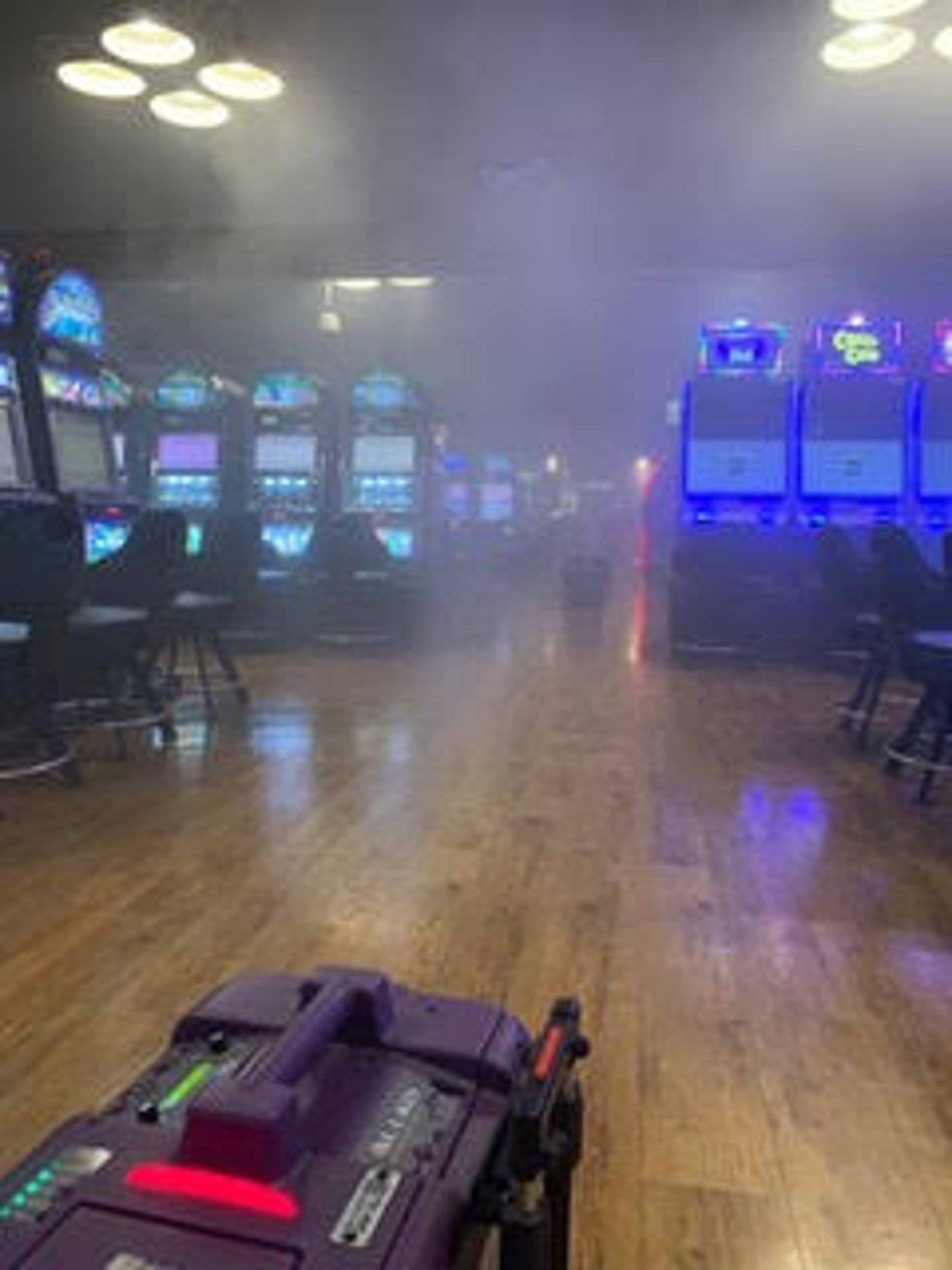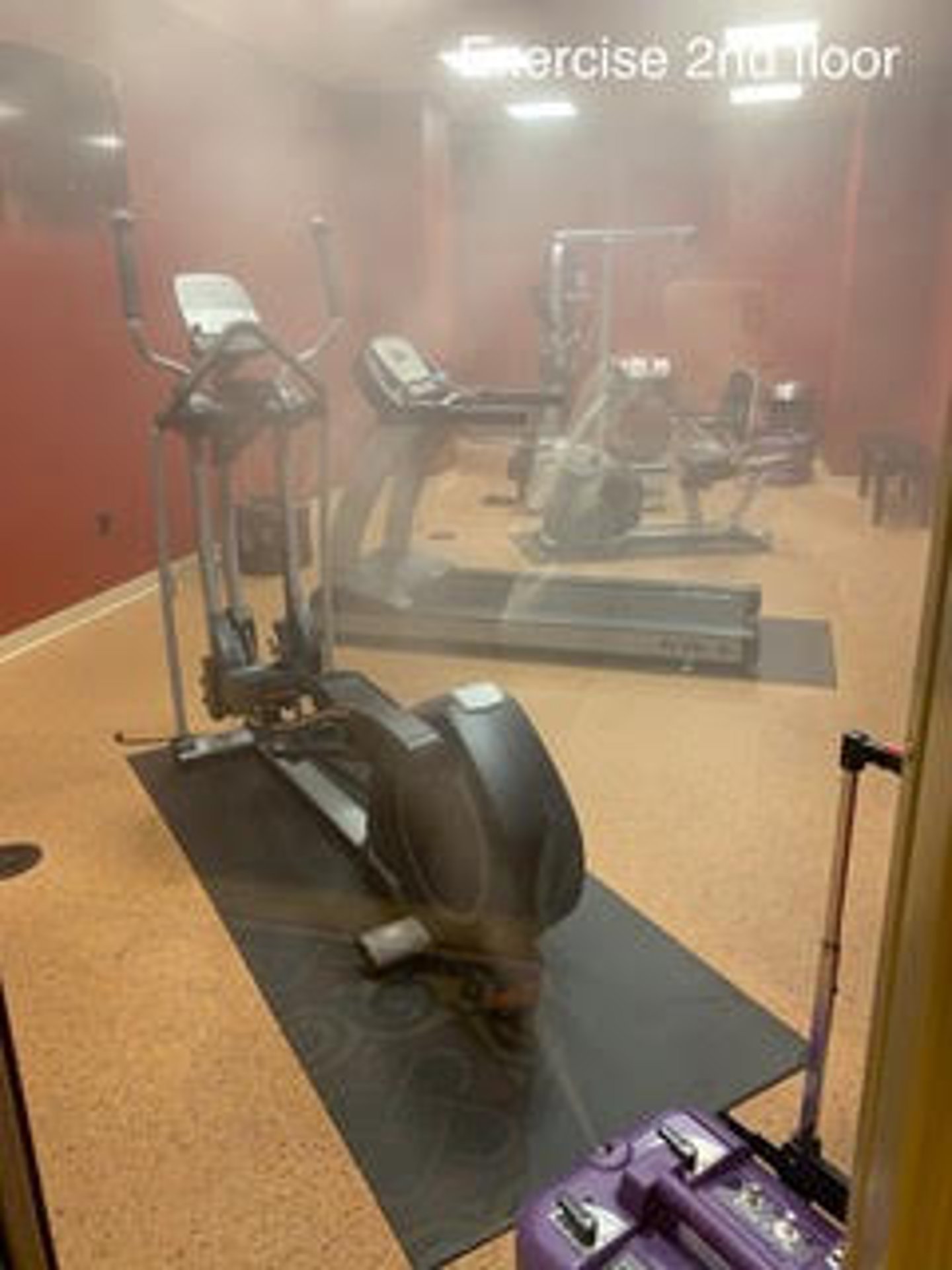Hydrogen Peroxide-based Fogging System Makes Inroads with Hospitality
Sanitation and hygiene technology continues to improve as the COVID-19 pandemic remains front and center of consumer minds. Recently, CURIS System announced that its CURoxide™ Hydrogen Peroxide blend and fogging system has been approved for inclusion on the Environmental Protection Agency’s List-N as it meets the criteria for use against SARS-CoV-2 (COVID-19).
The CURIS Decontamination System is a portable, hydrogen peroxide-based fogging system capable of disinfecting a room or enclosed area via patented pulse technology with a measurable kill of 99.9999% of dangerous germs. While most systems rely on dispensing chemicals and turning off once the desired time is achieved or depend on manual spraying, CURIS goes a step further by focusing on a ‘maintained pathogen-kill zone.’ Its system is designed to reduce human error with a hands-free system for remote operation that allows the operator to monitor, manage, measure, track, and report, including the ability to quickly prove, and continuously improve, decontamination efforts.
Traditional cleaning methods often miss surface areas, and many disinfectants that kill 99.9% of germs can leave up to 1,000 harmful organisms behind on surfaces. And, according to the company, other commercial solutions on the market have been proven to leave behind dangerous, toxic residues that collect grime and cause corrosion to surfaces, materials, electronics and more. Many of these chemical residues have been linked to neurotoxicity, allergies and anti-microbial resistance in humans. CURIS also has a cloud-based reporting system that lets the operator know when the disinfecting cycle is done and keeps track of results, cleanings, etc.
And CURIS is beginning to make inroads with the hospitality market. One hotel – the Hard Rock Hotel and Casino in Tulsa, OK – is currently using this technology to disinfect every single guest room between stays. To learn more about the technology and how it can be used by the hospitality industry, HT spoke with Frances Grinstead, CEO, CURIS System.
What is the background of how this technology was invented?
CURIS fogging technology was invented to provide a solution which would enable Hospital Grade Disinfection to go portable in a suitcase-sized hydrogen peroxide dry fogging device. CURIS wanted to provide a technology which could engulf a space with a dry fog technology to kill germs everywhere air touches but never leave harmful chemical residues. CURIS was needed to combat pathogens which were becoming more resistant and more virulent. It was designed to be versatile, easy and efficacious. Strong enough to kill Hospital Super bugs and Versatile enough to treat transport vehicles. Today there is no shortage of industries CURIS serves like Hotels, Schools, EMS, Police, Military, Airplanes, Hospitals and more.
While I was working in the high-level disinfection industry around the country and internationally, my teenage daughter contracted a drug-resistant MRSA infection in her ear from a local high school weight room, resulting in 6 invasive surgeries and loss of hearing. It turns out the school had been battling MRSA contamination for more than two years but had not been able to eliminate it. They were trying, but they did not have adequate tools or disinfection knowledge. I knew that this was a problem throughout many industries, including hospitality (hotels and restaurants), public gyms, schools, buses, aviation, office settings and more. I decided we needed a way to make hospital-grade decontamination accessible so that, not only hospitals, but also businesses and communities could help prevent the spread of disease – keeping employees and customers alike safe and healthy. We designed the CURIS System to go portable in a suitcase-sized hydrogen peroxide dry fogging device. CURIS wanted to provide a technology which could engulf a space with a dry fog technology to kill germs everywhere air touches but never leave harmful chemical residues. CURIS was needed to combat pathogens which were becoming more resistant and more virulent. It was designed to be versatile, easy and efficacious. Strong enough to kill hospital super bugs and rooms of any size yet versatile enough to treat transport vehicles, such as ambulances, buses, shuttles, airplanes and more.
How would hotels use this technology?
Currently this technology is used by hotels to treat each guest room in between guests to ensure germs are not something passed from guest to guest or staff. In addition, the hotels regularly treat their gyms and restaurants in addition to their staff break rooms to minimize the risk of coronavirus and other infectious disease transmission. They also use this upon suspected cases in executive offices and communal areas. Once the treatment is completed, decals and tent marketing pieces are left behind to educate guests and reassure them of the extraordinary efforts made on their behalf.
How would restaurants use this technology?
They use this technology in their dining areas each day/evening after the guests leave. They could either fog the whole space or use our versatile hand sprayer to quickly disinfect all the high touch surfaces such as tables, chairs, door handles, etc. One of the things that makes CURIS unique, is it leaves absolutely no toxic chemicals or residue behind, so it is completely safe around food and humans.
How often should this technology be used?
Currently it is used daily and weekly to ensure complete disinfection of spaces.
Our 7% hydrogen peroxide leaves no harmful residues, so users can choose the frequency of use based on their needs and staffing. During the pandemic, of course, everyone has stepped up their frequency of treatments, which is one reason they like our solution so much, because it does not build up any sticky mess, is not toxic to humans or animals and does not corrode surfaces, electronics or machinery over time as does other products on the market.
Does it pose any harm to the operators?
The CURIS 7% solution is safe to handle, but as with any disinfectant gloves must be worn. The beauty of our no-touch foggers is that operators can simply fill the fogger with solution and set it to start after they leave the room, without ever being exposed to the fog.
How is it remote controlled?
The CURIS fogging system is designed to be used remotely through wireless technology so that no person has to be exposed to a potentially contaminated environment. This is achieved through an APP that interacts with the fogger to start, stop and control from outside a space. There is also a cloud based tracking and scheduling system that can help operators know areas treated versus untreated as well as which area still needs to be treated.
How does the cloud reporting system work?
All of the data that is recorded by the device and APP are uploaded into a secure database to generate a report for each treatment or to gather information for later to analyze frequency, scheduling, productivity, fogger run times, locations treated and so much more.
How can operators be sure that a space is truly clean once it is finished working?
CURIS is one of the only disinfection technologies on the market today that employs fact-based and science-driven proof of cycle efficacy through biological and chemical indicators. These will prove you killed the germs in the room, not just guess. In addition, the report generated from the treatment will serve as evidence to a guest or anyone else of what, how and when a disinfection has occurred. From the very beginning, as a result of my daughter's infection, it was imperative that we could "know" with certainty that the harmful pathogens were eliminated. With sprays and other fogging systems, users and customers are basically just guessing and hoping that the disinfectants covered ALL surfaces and for long enough. Our motto is "fact-based, science-driven results," so we encourage everyone to validate their fogging with biological indicators, proving the treatment killed the hardest-to-kill spore.




